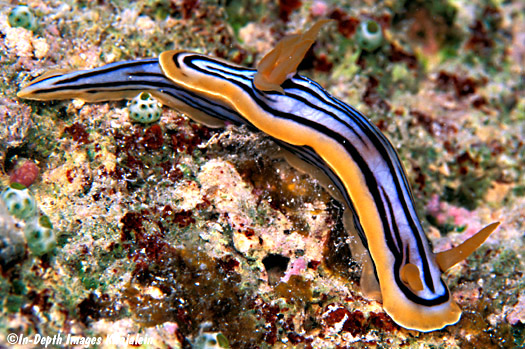
Chromodoris elisabethina is probably the most common of the larger chromodorid nudibranchs in the Marshalls. It is most often found on midlagoon pinnacles, where it lives in ledges and under overhangs in 5 to 15 meters of water, or on the interisland lagoon slope on sponges growing on reefs or in patches of Halimeda algae as deep as about 35m. It can also be found under large rocks or in ledges on the oceanside reef. We have seen specimens up to about 40mm in length. It is similar to Chromodoris annae and to Chromodoris sp e248, but is much more common. We also have this from Pohnpei. Chromodoris elisabethina was first reported in the Marshalls from Enewetak and Kwajalein Atolls by Johnson & Boucher (1984).

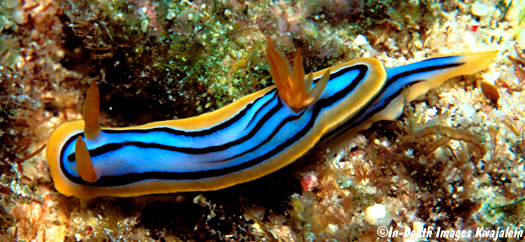
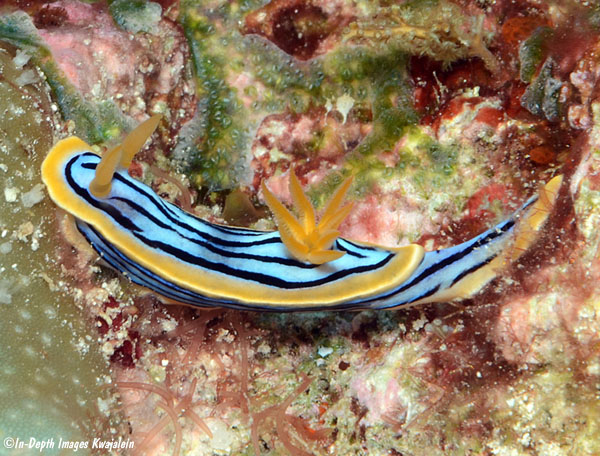
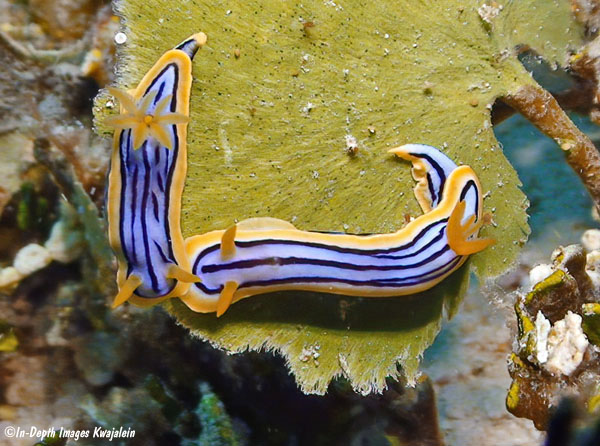
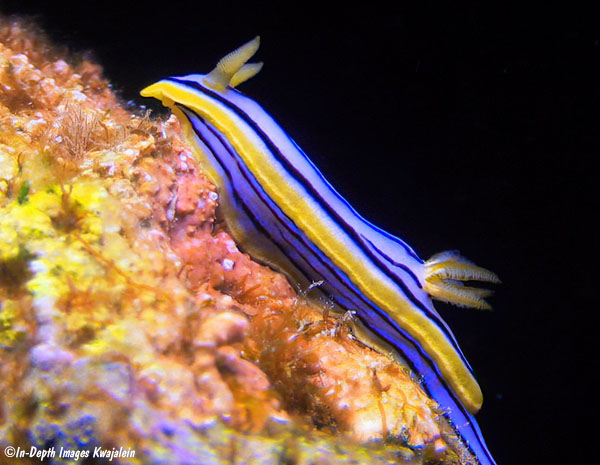
The animal below is snaking through some empty spongin fibers. It may have eaten the sponge from the skeleton. We have seen this species feeding on several different sponges.
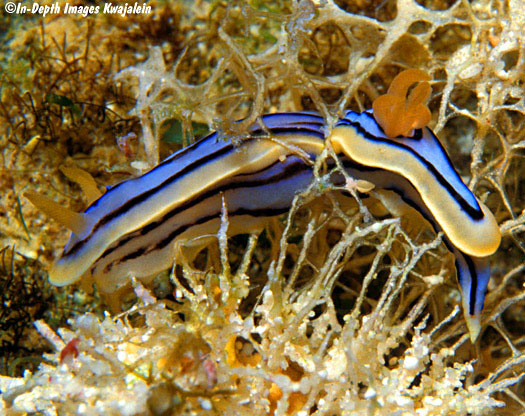
The next few shots show animals grazing on one of their prey sponges, one of them a tough, orange-brown sponge common in patches of Halimeda algae on the lagoon slope.
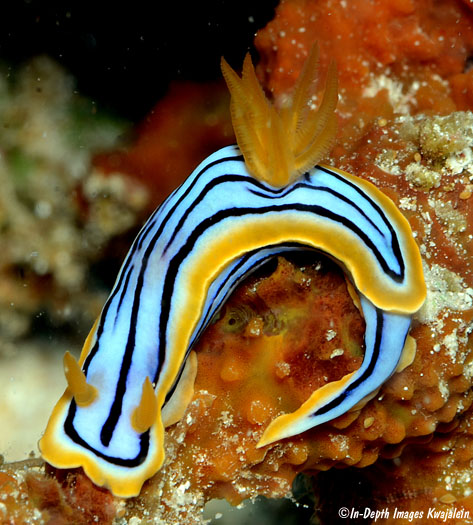
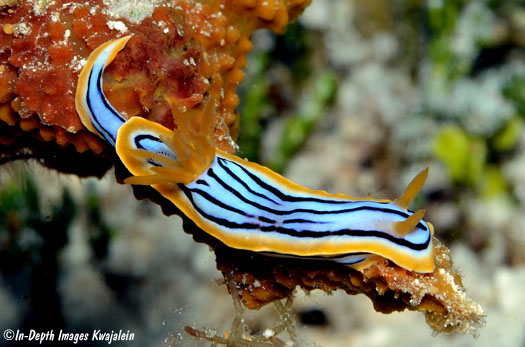
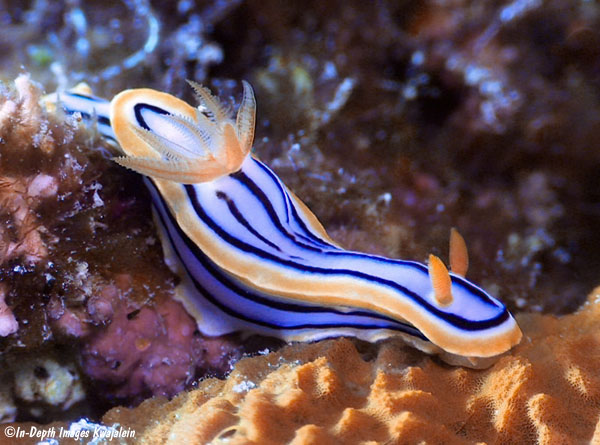
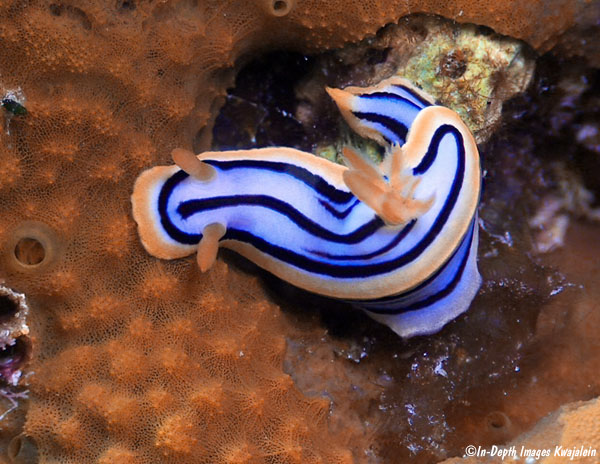
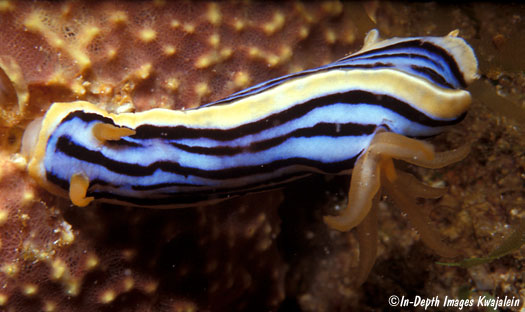
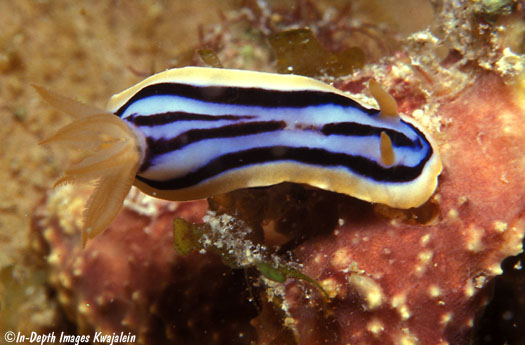
We did not check to see if the animal below was actually feeding on the gray sponge.
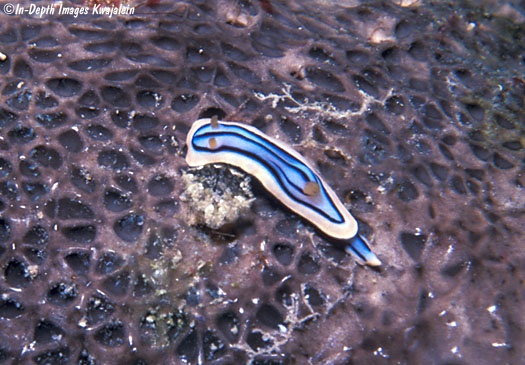
But the one below definitely was feeding on its sponge. The mouth had just pulled away from that grazed depression in the sponge. This one was observed on a Kwajalein Atoll lagoon reef at a depth of about 7m on 31 August 2009.
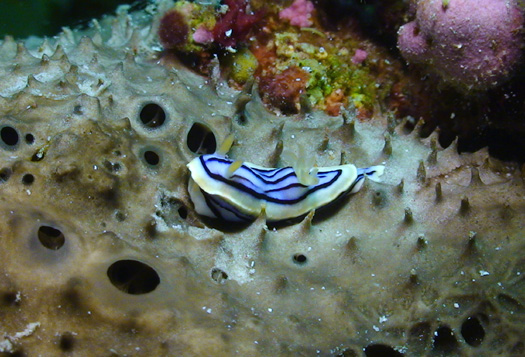
In this scene captured from video, three specimens were feeding on a black sponge that was covered by a layer of algae and sand grains.
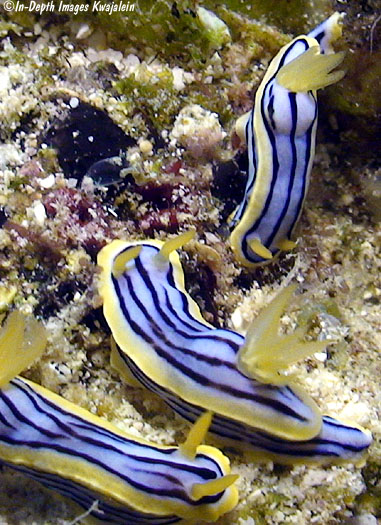
When first noticed, the individual below had its mouth pressed down over the small grazed patch of white tunicate directly below the right end of its notum. If it was indeed feeding, and it appeared to be, that would be an unusual prey for a chromodorid. The nudibranch crawled away when exposed to light.
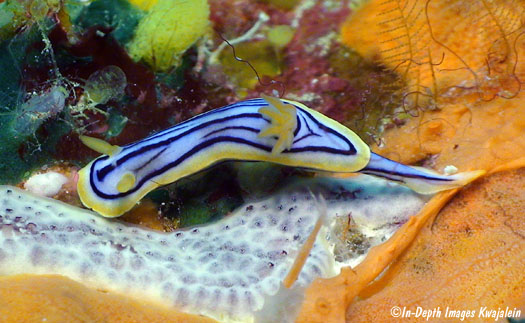
Species of Chromodoris deposit their eggs in spirals with the flat edge on the substrate instead of the more commonly seen flowery spirals with narrow edge attached. Other Chromodoris species we have seen with this kind of egg mass are C. colemani, C. aspersa, Chromodoris sp. e248, and Chromodoris sp. e236. The eggs can be seen below overlaying the red sponge.
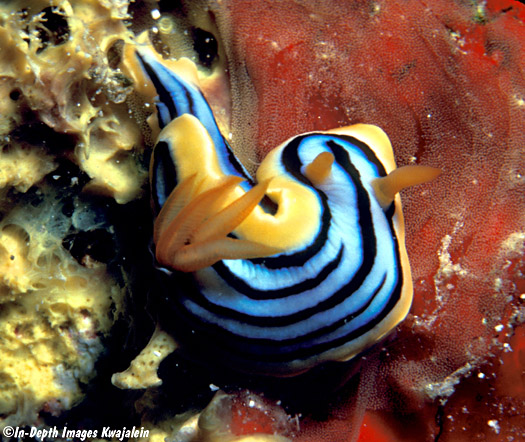
From a different angle, it looks like the nudibranch may have been grazing on the yellow sponge beneath its tail.
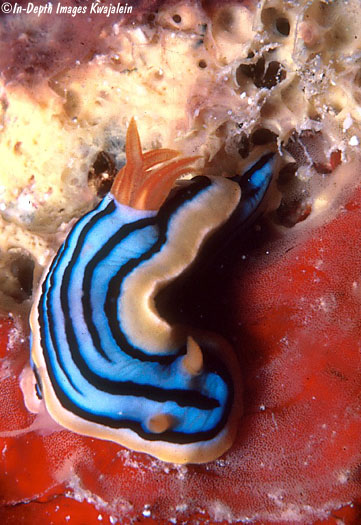
The one below was under a rock, crawling across some colorful Eusynstyela tunicates.
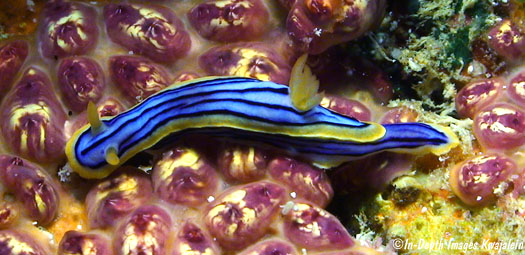
Curled up on a leaf of Udotea algae in a lagoon Halimeda patch.
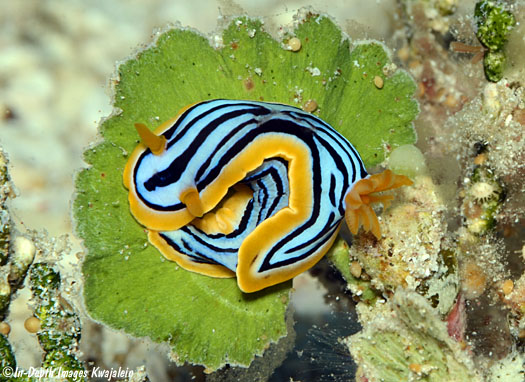
Created 14 December 2005
Updated 7 November 2021